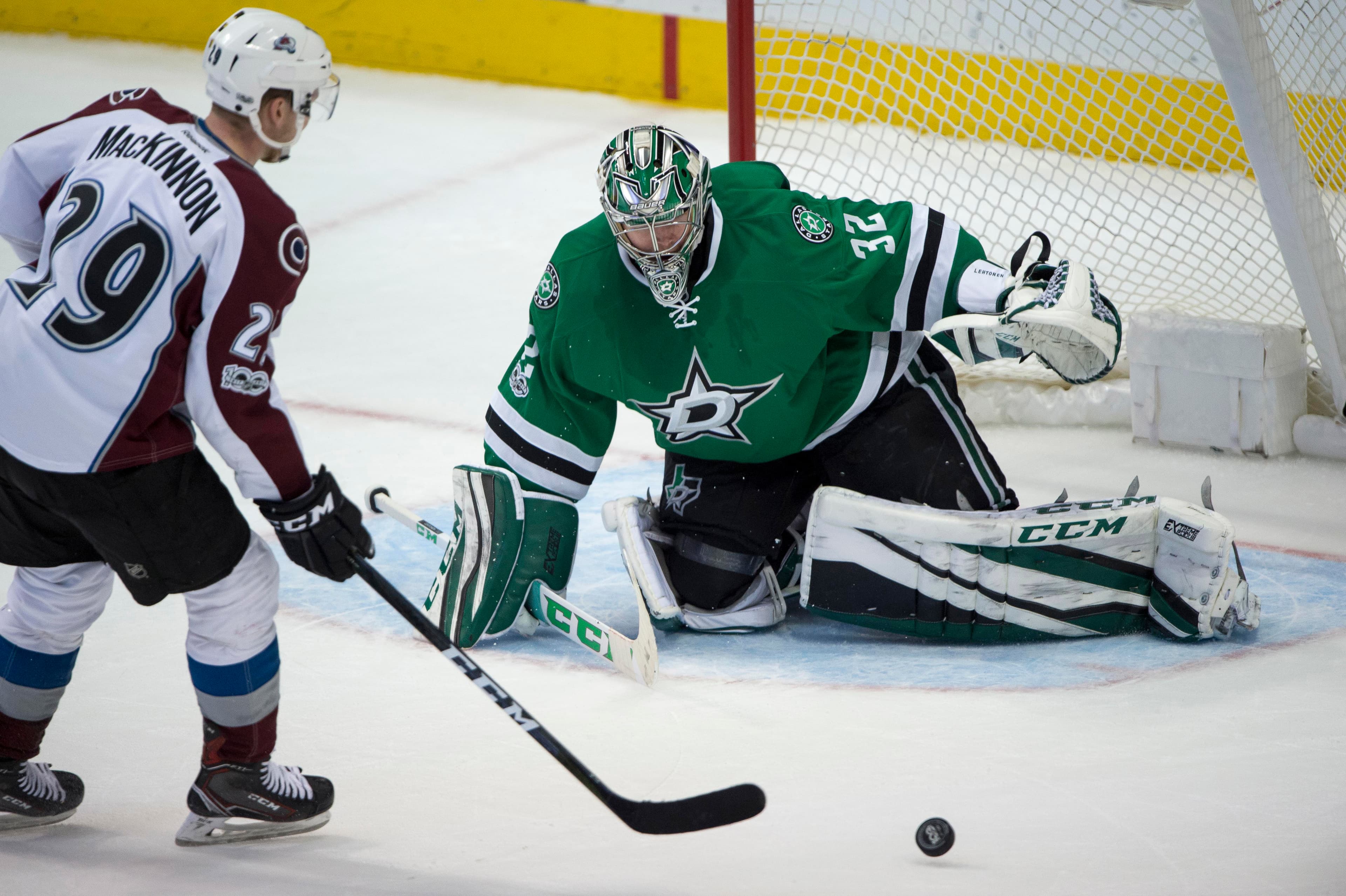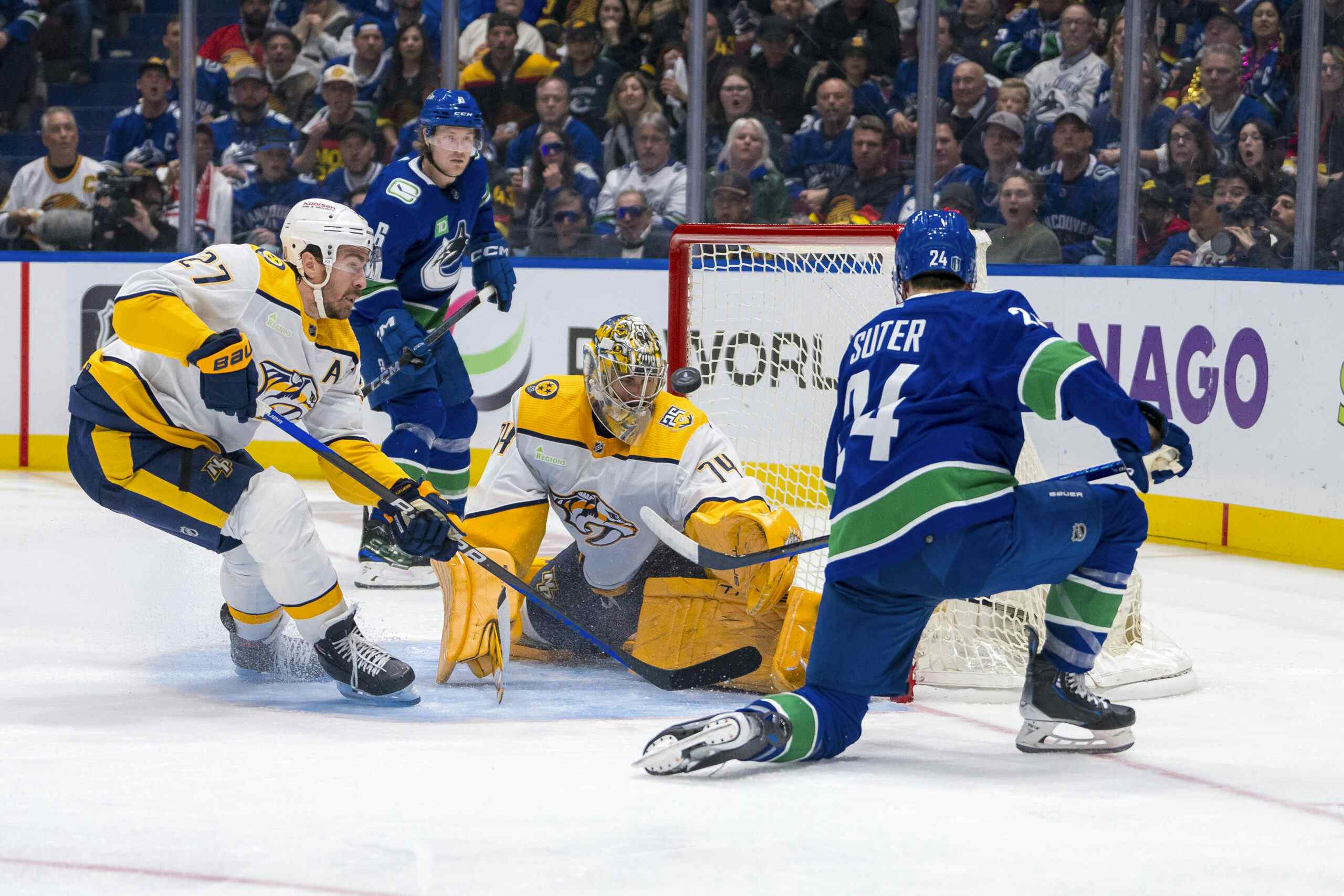How the Canucks can Weaponize their Cap Space and Shore up their Goaltending

By J.D. Burke
6 years agoThe Dallas Stars made a splash earlier this week, acquiring the rights to pending unrestricted free agent goaltender Ben Bishop from the Los Angeles Kings.
This might seem like an insignificant transaction from the Vancouver Canucks’ perspective, but there’s more than meets the eye. Let’s dive into why this might open a window for the Canucks to play salary vulture and pick off pieces from the Stars’ sickly crease.
The obvious implication is that Dallas is going to sign Bishop — who played his junior hockey in Texas and preferred the Stars to other suitors in any trade from Tampa Bay — to shore up their single greatest area of need going into this off-season: goaltending.
We can safely assume that means adding somewhere in the $5-million to $6-million range annually for a not yet determined number of years. Under normal circumstances, that’s not an issue in and of itself. Nothing about the way the Stars have approached their goaltending for the last three-plus seasons has been ordinary, though.
You’d never guess it by looking at the Stars finish last season as the second most permissive team by surrendering goals, but they led the league in salary cap expenditure on goaltending. The duo of Antti Niemi and Kari Lehtonen combined for $10.4-million in cap charges and led the Stars to a league-worst .893 save percentage in all situations. And they’re both signed for next season.
It’s hard to argue that there’s a more inefficient way to go about building your last line of defence than the Stars have. They can add Bishop’s $5-million-plus salary annually and still leave off better for it without erasing one of Lehtonen or Niemi from their books.
I don’t think that’s the plan, though. In fact, I’m of the mind that this Bishop acquisition, if nothing else, signals Stars general manager Jim Nill’s conviction about turning his team around, and fast. What other reason does someone acquire a 30-year-old goaltender who can command the type of high-end starter’s salary a goaltender with Bishop’s resume surely will.
That’s hard to do with close to $15-million tied up in goaltending. The most obvious answer is to just buyout Niemi, who’s buyout cap charge is $1.1-million fewer than Lehtonen for the following two seasons. Again, though, that doesn’t fix the Stars problem. If they chart that course, they’re still investing about $12.4-million, and that’s using a conservative estimate on Bishop’s figure.
The Stars want to win next season, and winning in the NHL is the ultimate efficiency contest from the general manager’s perspective. For the Stars, a team with something of an internal budget, investing as much money as they currently project to on goaltending next season might disqualify them. It’s an albatross around their necks with the potential to suffocate Stanley Cup aspirations.
This is where a rebuilding franchise with cap space and financial flexibility comes to the rescue. Can you think of a team that checks those boxes?
With just Bo Horvat and Erik Gudbranson as priority free agents this offseason, Vancouver has about $17-million in cap space. If we adjust that figure to account for the likelihood of the Vegas Golden Knights taking Luca Sbisa’s $3.6-million off the books, that number is closer to $21-million.
The Canucks have the flexibility — so that’s not an issue. And if we want to approach this from a hockey perspective, hell, they have an immediate need for a stopgap goaltender to at least work in tandem with Jacob Markstrom. They have an alibi.
I don’t know what saving the Stars from anywhere between $4.5-million to $5.9-million in a year’s salary is worth, but I know it’s worth finding out. In this case, even, it’s worth dictating.
There can’t be a long list of teams capable of pulling off this trade. I just don’t think your average rebuilding team can sell ownership on this kind of short-term pain for long-term profit. If the Canucks can get ownership on board with this kind of trade, they are the market.
Canucks general manager Jim Benning doesn’t even need to look outside his division for a precedent. Last year the Arizona Coyotes picked up Pavel Datsyuk’s cap charge (not the salary itself) for the final year of his deal from the Detroit Red Wings to move up five draft picks in the draft. The difference in five picks? Arizona selected Jacob Chychrun, and he played 68 games for them this season; Detroit selected Dennis Cholowski, who just left college after an up-and-down season and has a long road ahead of him to the NHL.
How much higher are the stakes if the Canucks are leveraging their cap space to Dallas to move up from fifth overall to third, as one example? One care dare to dream.
Much of this hinges on the Canucks’ willingness to double-down on short-term pain. Their language this offseason suggests they’ve at least accepted losing as an inevitability. Trading for a dead weight goaltender like Lehtonen or Niemi is a move that actively makes the Canucks worse. It’s tanking.
At the end of the day, though, Vancouver’s ownership holds the cards here. This type of trade is a lot easier to suggest from #mybasement because it’s not my money on the line. And to that exact end, I certainly couldn’t begrudge the Canucks for not being on board.
Can you think of a better way for the Canucks to announce their investment in a rebuild, though? They talk about that word — the one we make so much about — as something they’re willing to let the fan base use as a rallying point. Why not start it with a bang?
Recent articles from J.D. Burke





